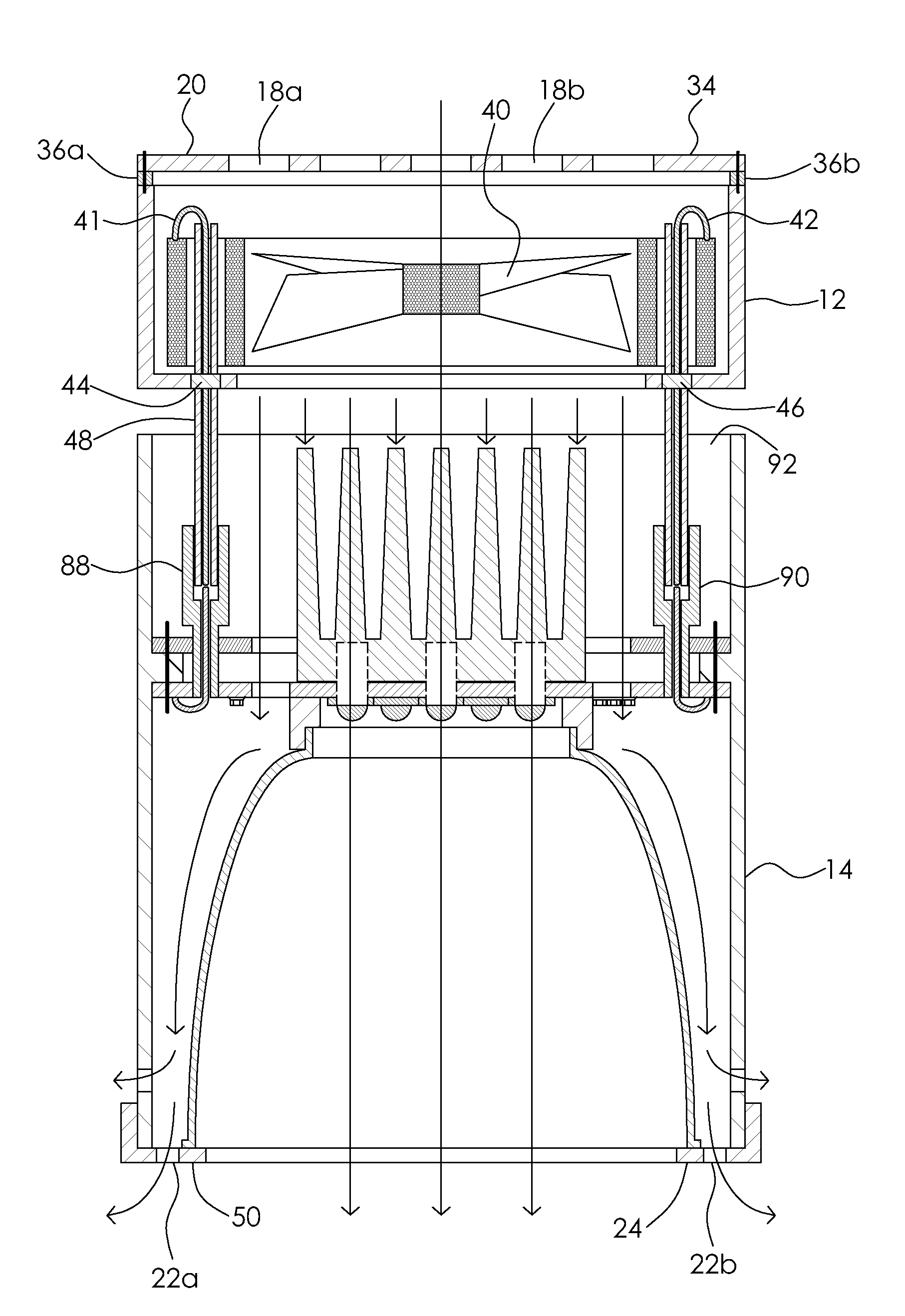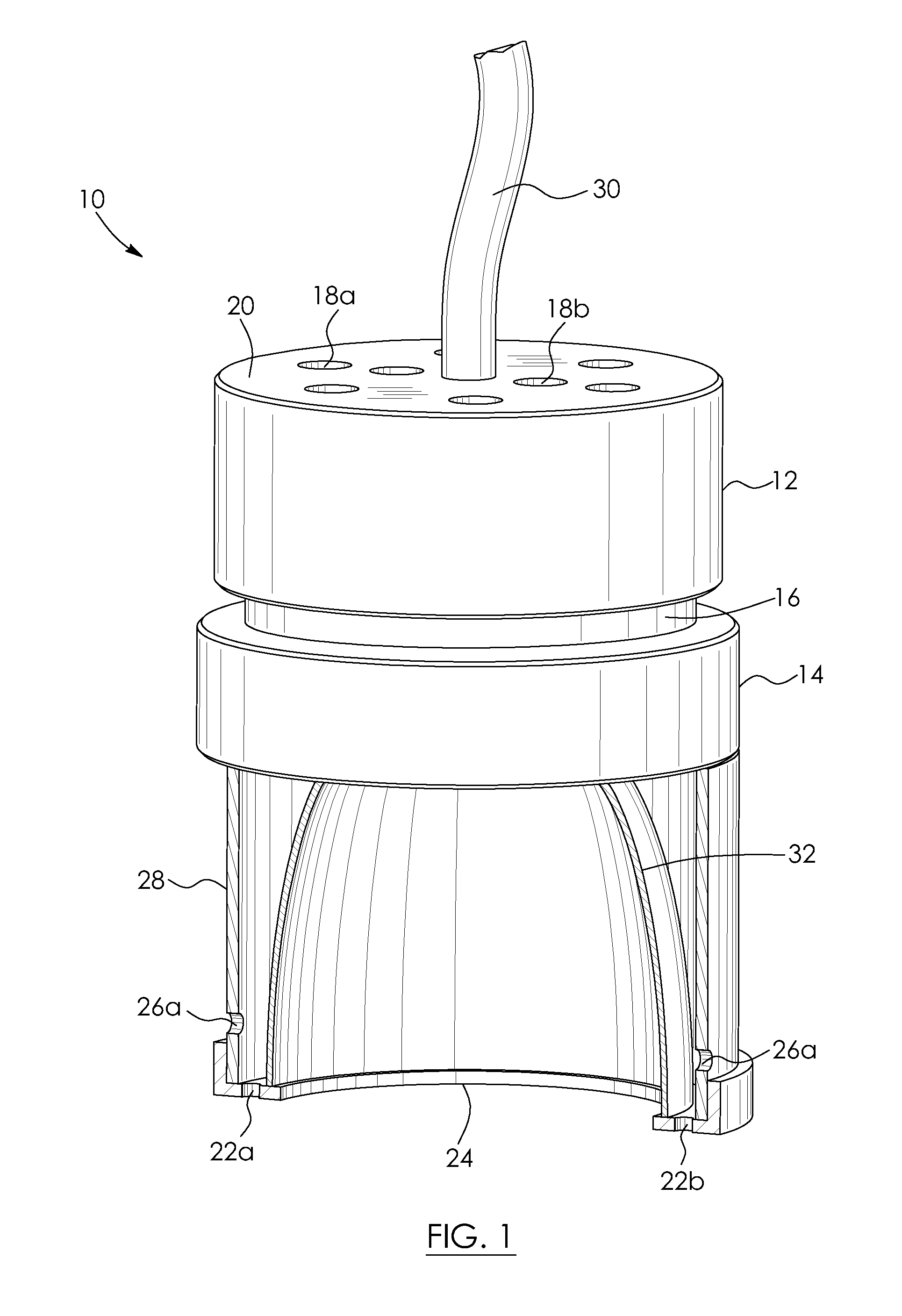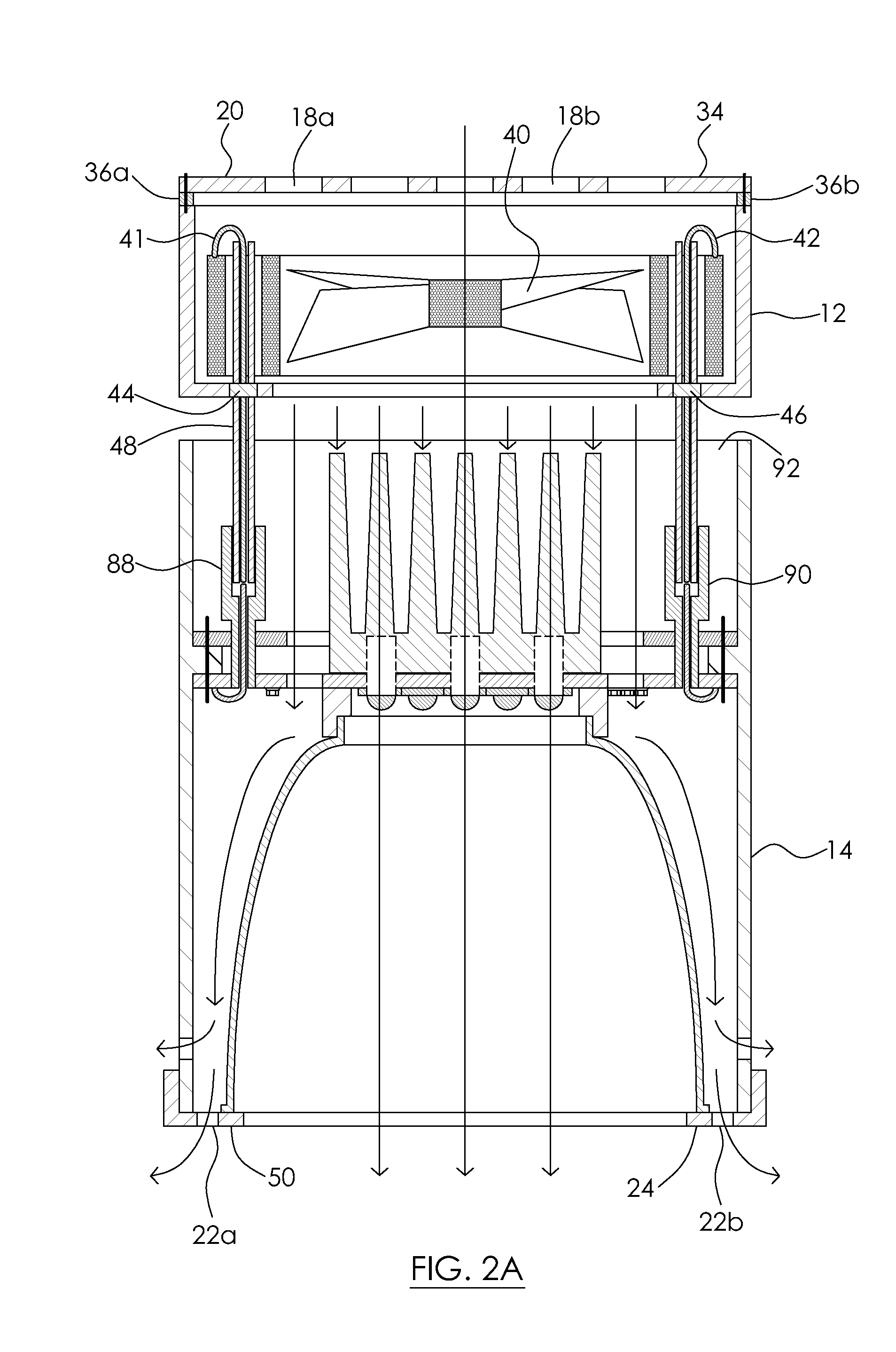Light-emitting diode fixture with an improved thermal control system
a technology of thermal control system and light-emitting diodes, which is applied in lighting and heating apparatus, cathode-ray/electron beam circuit elements, lighting heating/cooling arrangements, etc., can solve the problems of thermal stress of light-emitting diodes, increase in the temperature of light-emitting diodes, and additional heating of pn junctions
- Summary
- Abstract
- Description
- Claims
- Application Information
AI Technical Summary
Benefits of technology
Problems solved by technology
Method used
Image
Examples
Embodiment Construction
[0017]Referring to the drawings and first to FIG. 1 an improved light-emitting diode fixture 10 is shown. The light-emitting diode fixture 10 includes a first housing portion 12 and a second housing portion 14. The first housing portion 12 and second housing portion 14 are spaced apart and coupled by a connector 16. The connector is hollow and permits fluid communication between the first housing portion 12 and the second housing portion 14. In this example the connector 16 is integral with the first housing portion 12. In other examples the connector may be integral with the second housing portion or the connector may be a separate component. The first housing portion 12 is vented and has a plurality of openings, for example openings 18a and 18b, which extend through an end 20 of the first housing portion which is opposite of connector 16. The second housing portion 14 is also vented and has a plurality of openings, for example openings 22a and 22b, which extend through an end 24 o...
PUM
 Login to View More
Login to View More Abstract
Description
Claims
Application Information
 Login to View More
Login to View More - R&D
- Intellectual Property
- Life Sciences
- Materials
- Tech Scout
- Unparalleled Data Quality
- Higher Quality Content
- 60% Fewer Hallucinations
Browse by: Latest US Patents, China's latest patents, Technical Efficacy Thesaurus, Application Domain, Technology Topic, Popular Technical Reports.
© 2025 PatSnap. All rights reserved.Legal|Privacy policy|Modern Slavery Act Transparency Statement|Sitemap|About US| Contact US: help@patsnap.com



